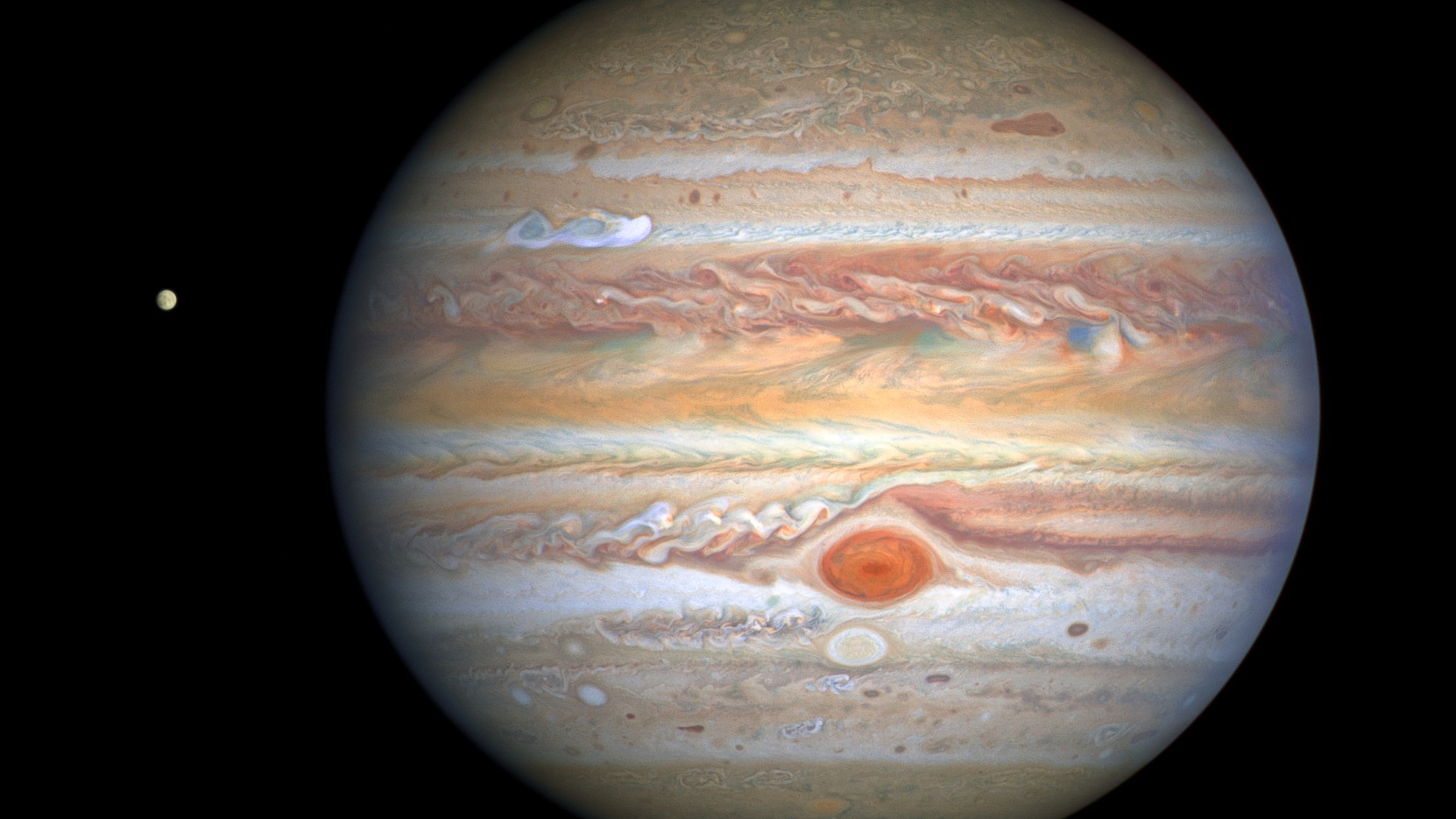Radiation shields and layers of insulation ensure that the electronics of the devices remain protected from the Jovian system’s aggressive radiation environment and massive temperature fluctuations of nearly 500 degrees. If the antennas and the magnetometer mast can finally be put into operation without any problems, then everything is ready for the trip to Jupiter.
Three times on Earth, once from Venus, and finally: Jupiter
This journey is long: JUICE would probably need eight and a half years for the 6.6 billion kilometres. As is typical for interplanetary missions, the probe first swings into orbit around the sun. In the coming years, this will take them once to Venus and three times to Earth – JUICE is gaining momentum with each of these flights. During its first Earth flyby, scheduled for August 2024, JUICE will, for the first time in interplanetary travel in space, use the combined gravitational field of Earth and Moon – previously only Earth’s gravitational field was used to gain momentum. . In January 2029, the probe will finally set course for Jupiter, propelled once again by Earth’s gravitational field.
“JUICE is one of the few ESA missions of the past decades that has stayed reasonably on schedule.”Paul Hartog, astrophysicist
“JUICE is one of the few ESA missions of the past few decades that has stayed reasonably on schedule,” says Paul Hartog of the Max Planck Institute for Solar System Research. “As a result, the time pressure to prepare and test the instruments in a timely manner was so great that it must now be conducted.” Many calibrations and instrument properties are on the way in space.) On the ship that he leads his institute has been built. The first step after launch will be to test the functionality of the SWI and other instruments.” Then there are the so-called payload checks every year; here we can, for example , testing the alignment of our telescope during the Earth flyby.
Signs of life on Venus, comet water on Jupiter?
During the August 2025 flyby of Venus, Hartog and his colleagues want to clarify a controversial question: Does Venus’ atmosphere actually contain a trace of phosphine, a potential metabolic product of simple life forms? This assumption was made only a few years ago. “SWI can measure a chemical compound in flight with a sensitivity 1,000 times greater than what is possible from the ground,” says Hartog.
In July 2031, the time has finally come. JUICE oscillates in the Jovian system, initially in orbit around the planet. Because Jupiter itself is also the focus of the researchers. They want to use the submillimeter radio telescope to study the water in the gas planet’s atmosphere. Ten years ago, observations with the Herschel Space Telescope showed that it was very likely caused by comets that keep falling on Jupiter. Above all, the water molecules that come from Comet Shoemaker-Levy 9 must remain detectable. Its fragments only fell into Jupiter in July 1994. JUICE should provide clarity, Hartog said: He hopes the data will provide information about flow conditions in Jupiter’s atmosphere, but also about comets’ role as providers of water.
However, the most exciting results are likely to be delivered by flights from Europa, Ganymede and Callisto – the eponymous destinations of the JUICE mission. Despite being neighbours, the three couldn’t be more different. Europa is enveloped in ice, but its interior is 90% rock and iron. Ganymede and Callisto also have ice armor, but they also have ice in it.

“Total coffee aficionado. Travel buff. Music ninja. Bacon nerd. Beeraholic.”







More Stories
A mysterious discovery on Mars – NASA team talks about “tire tracks” or “dragon scales”
Ringworm (tinea corporis): symptoms and treatment
Short sleep significantly increases the risk of disease – healing practice